Milady Skin Disorders and Diseases
1/74
There's no tags or description
Looks like no tags are added yet.
Name | Mastery | Learn | Test | Matching | Spaced |
|---|
No study sessions yet.
75 Terms
dermatologist
a physician who specializes in diagnosing and treating disorders of the skin, hair, and nails.
lesion
A mark on the skin; may indicate an injury or damage that changes the structure of tissues or organs. Can be as simple as a freckle or as dangerous as a skin cancer.
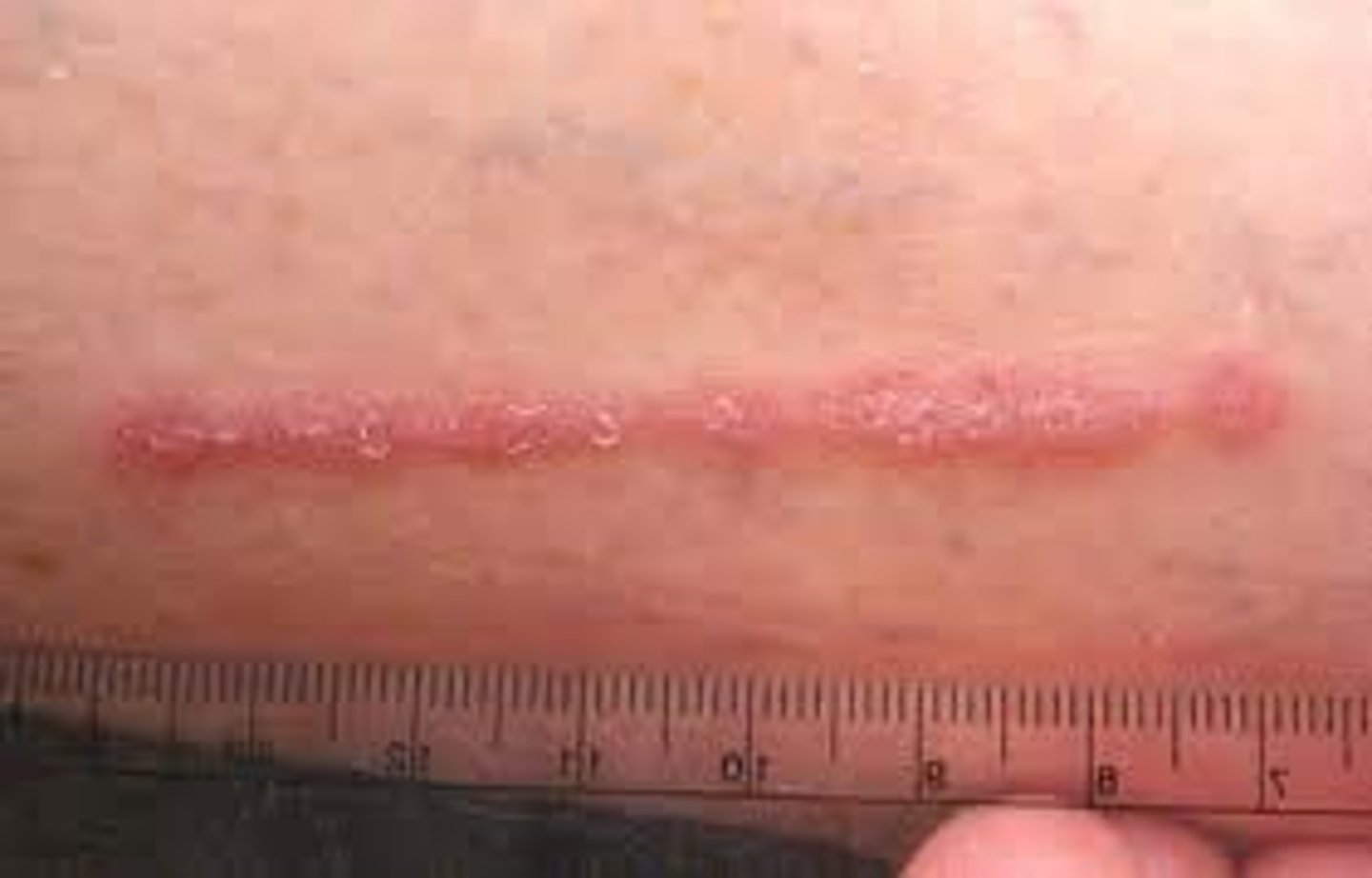
Primary Leison
lesions that are a different color than the color of the skin and/or lesions that are raised above the surface of the skin.
Bulla
Large blister containing a watery fluid; similar to a vesicle. Requires medical referral.
Cyst/Tubercle
Closed, abnormally developed sac that contains pus, semifluid, or morbid matter, above or below the skin. Requires medical referral.
Tubercle
cannot be drained of fluid
Macule
flat, colored spot on the skin
Cyst
can be drained of fluid
Nodule
a solid bump larger than .4 inches that can be easily felt. requires medical referral
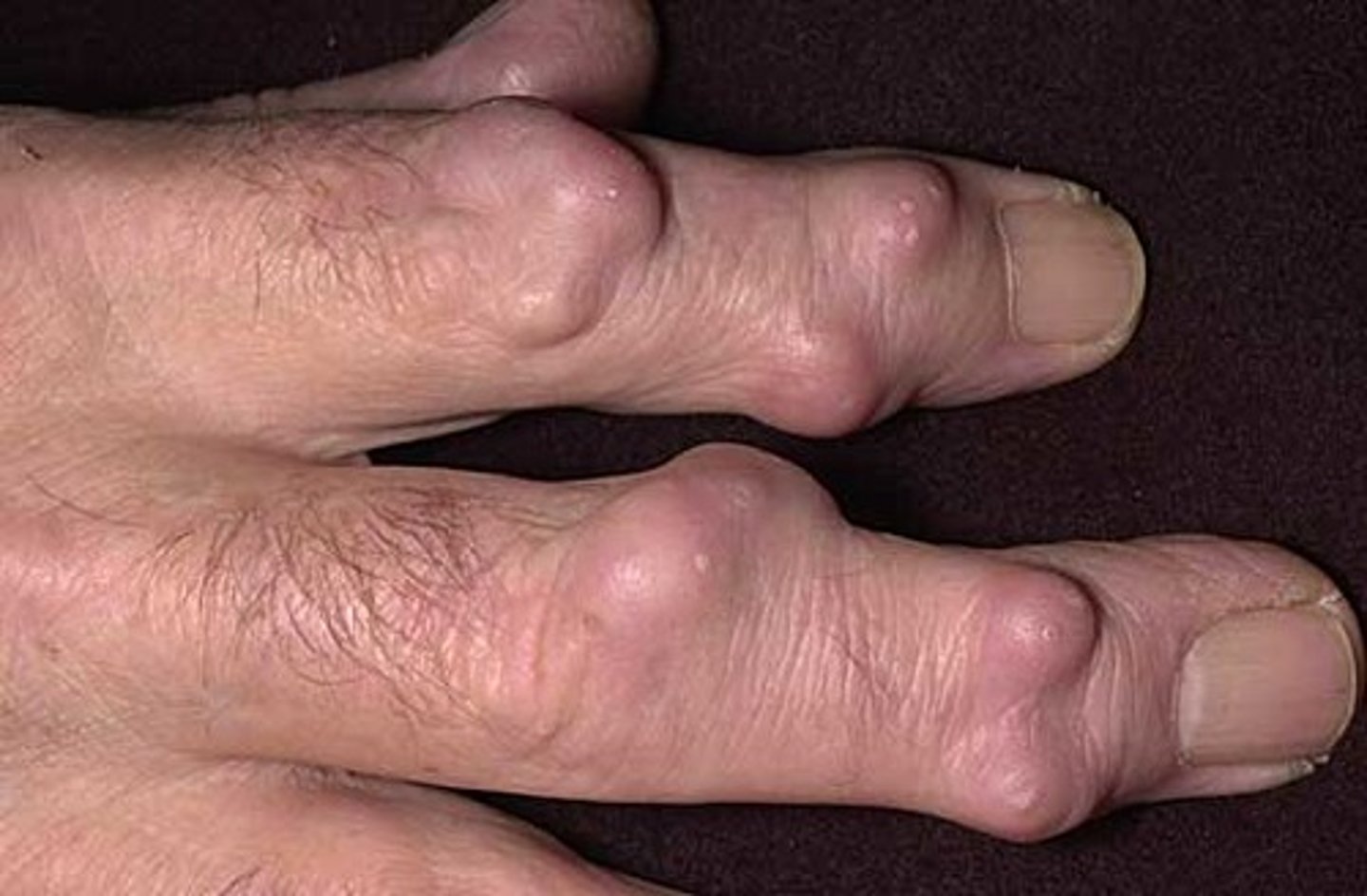
papule
Small elevation on the skin that contains no fluid but may develop pus
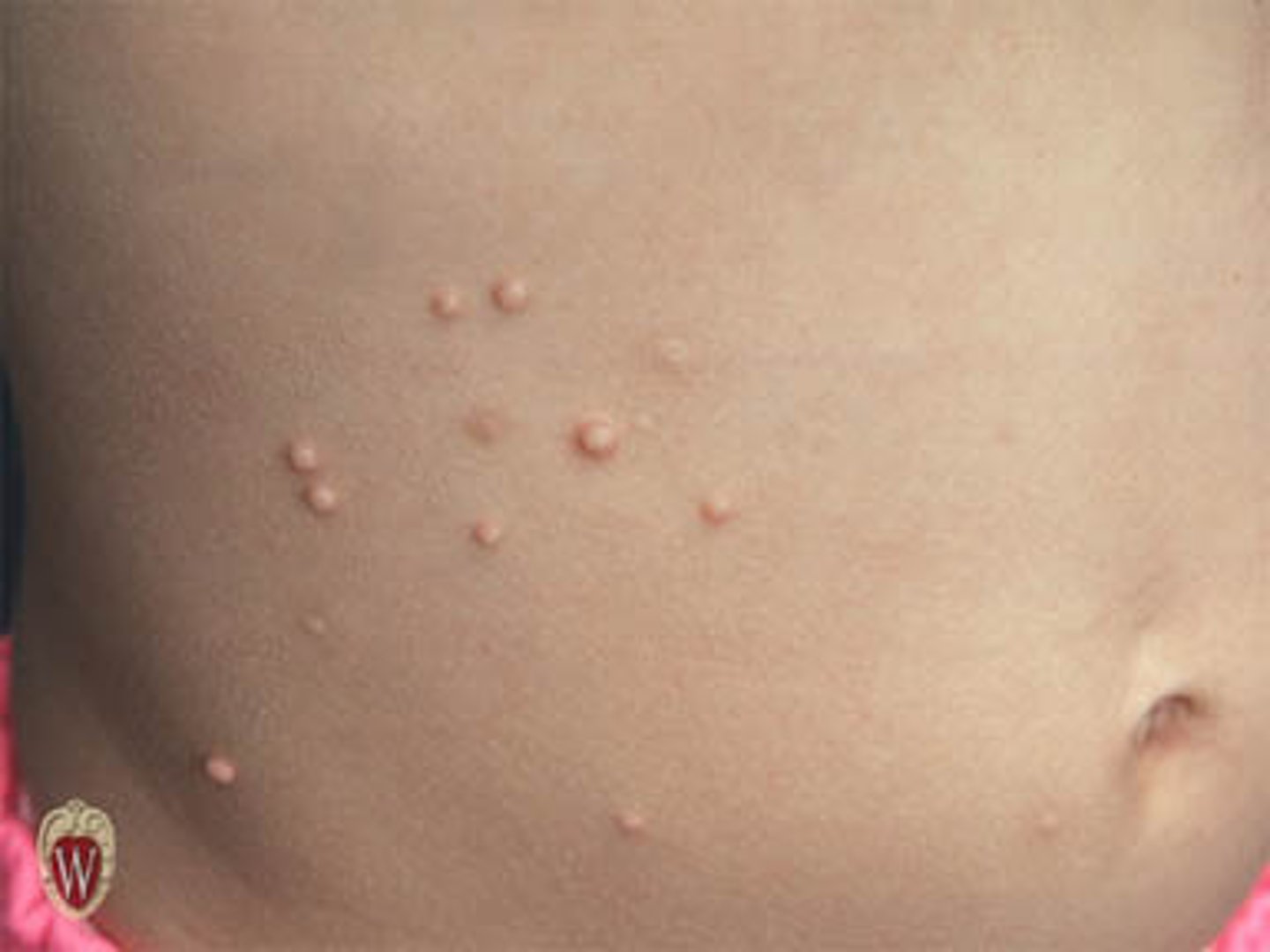
pustle
Raised, inflamed papule with a white or yellow center containing pus in the top of the lesion referred to as the "head" of the pimple.
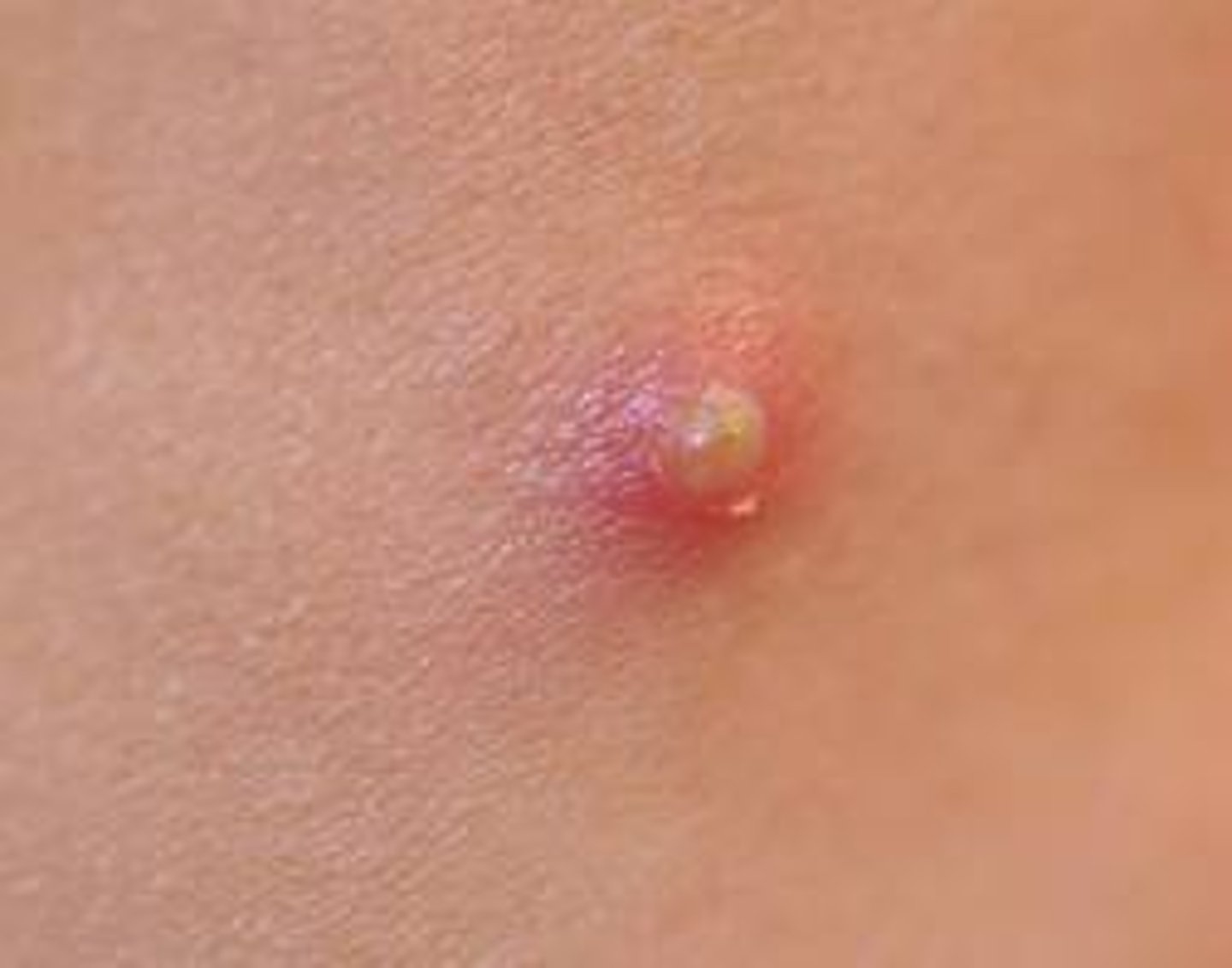
tumor
Abnormal mass varying in size, shape, and color
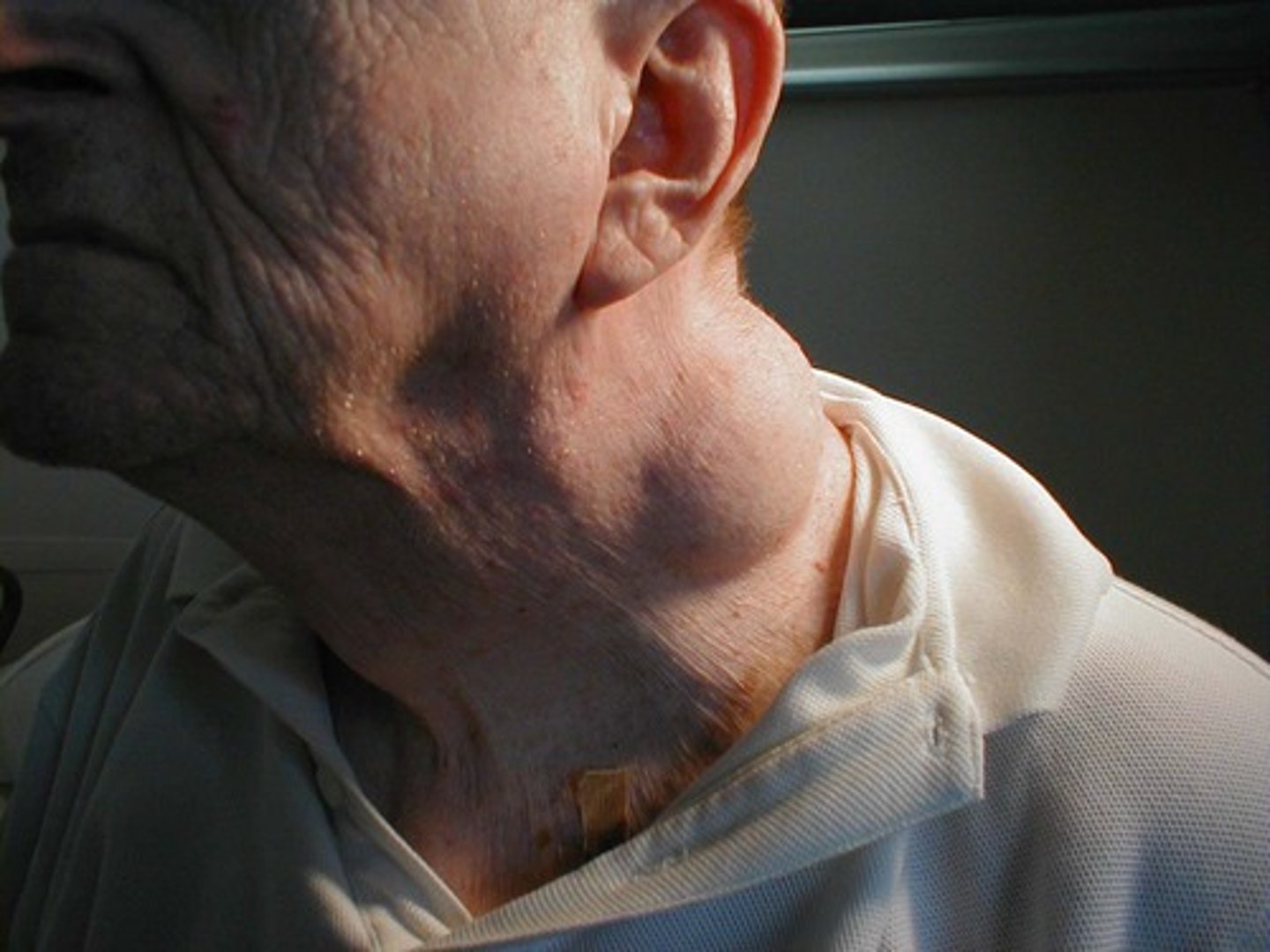
vesicle
poison ivy and poison oak
wheal
an itchy, swollen lesion that can be caused by a blow, scratch, bite of an insect, or urticaria (skin allergy), or the sting of a nettle. Typically resolved on its own.
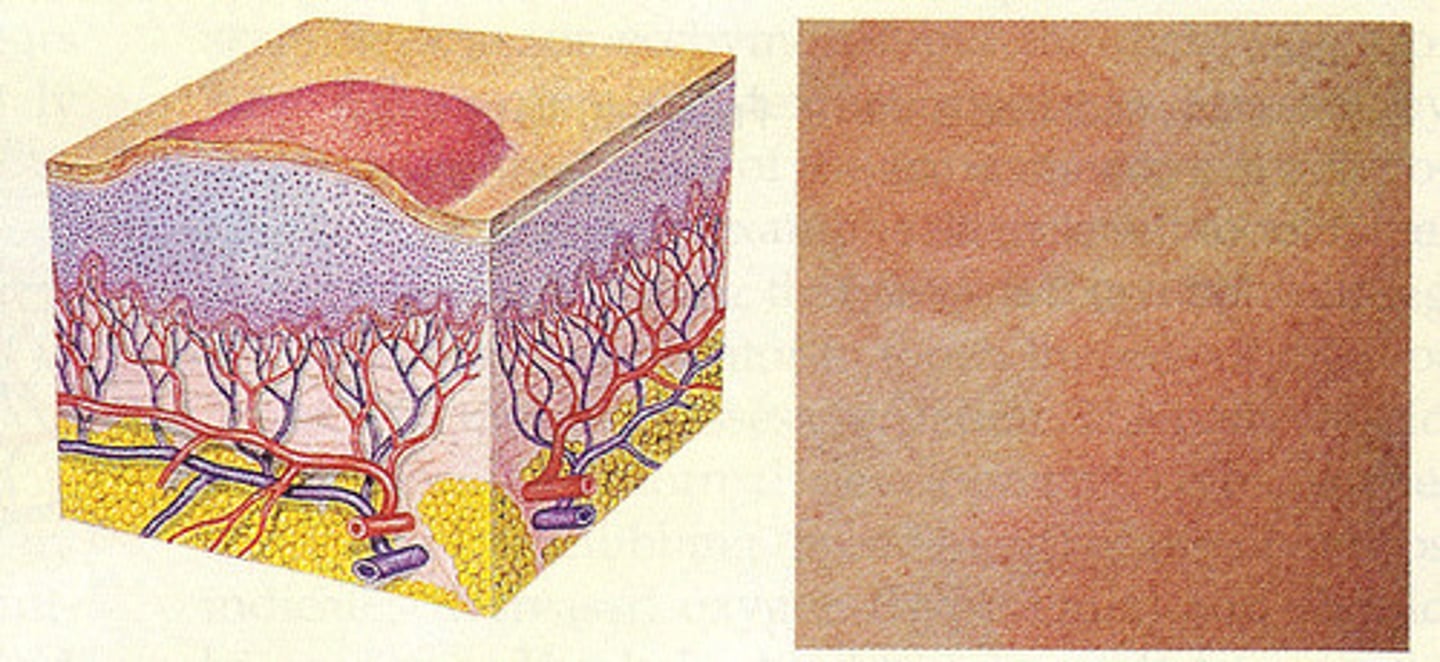
secondary skin lesions
Characterized by piles of material on the skin surface, such as a crust or scab, or depressions in the skin surface, such as an ulcer.
crust
dead cells that form over a wound or blemish while healing
excoriation
Skin sore or abrasion produced by scratching or scraping
fissure
A crack in the skin that penetrates the dermis. Examples are severely cracked and/or chapped hands or lips.
keloid
Thick scar resulting from excessive growth of fibrous tissue
scale
thin, dry, or oily plate of epidermal flakes.
Scar or Cicatrix
an example of a secondary lesion
ulcer
open lesion on the skin or mucous membranes of the body; accompanied by loss of skin depth and possibly weeping of fluids or pus.
open comedo
blackhead; hair follicle filled with keratin and sebum
the face, especially in the T zone
where do comedones appear most frequently
closed comedo
Whitehead; appears as a small bump under the skin surface. not exposed to the environment
milia
Benign, keratin-filled cysts that can appear just under the epidermis and have no visible opening. they resemble sesame seeds and are almost always perfectly round. they are commonly associated with newborn babies, but can appear on the skin of people of all ages. they are usually found around the eyes, cheeks, and forehead, and they appear as small, firm whitish masses.
acne
acne vulgaris, is a skin disorder characterized by chronic inflammation of the sebaceous glands from retained secretions and bacteria known as propionibacterium acnes
sebaceous cyst
Large protruding pocket like lesion filled with sebum
seborrheic dermatitis
Skin condition caused by an inflammation of the sebaceous glands. It is often characterized by redness, dry or oily scaling, crusting, and/or itchiness.
rosacea
Chronic condition that appears primarily on the cheeks and nose, and is characterized by flushing (redness), telangiectasis (distended or dilated surface blood vessels), and in some cases, the formation of papules and pustules.
heat, sun, cold weather, ingestion of spicy foods, caffeine, alcohol, and steess
What aggregates rosacea?
It's unknown
What is the cause of rosacea?
anhidrosis
a deficiency in perspiration or the inability to sweat, often a result of damage to autonomic nerves
bromhidrosis
foul-smelling perspiration, usually noticeable in the armpits of on the feet, that is generally caused by bacteria
hyperhidrosis
excessive sweating, caused by heat or general body weakness. requires medical referral
Miliaria rubra
Also known as prickly heat; an acute inflammatory disorder of the sweat glands, characterized by the eruption of small red vesicles and accompanied by burning, itching skin.
conjunctivitis
also known as pink eye
dermatitis
A term broadly used to describe any inflammatory condition of the skin
herpes simplex 1
Recurring viral infection that often presents as a fever blister or cold sore. many people have no symptoms
impetigo
contagious bacterial skin infection characterized by weeping lesions and usually caused by staphylococcus bacteria
psoriasis
is a skin disease characterized by red patches covered with silver-white scales and is usually found on the scalp, elbows, knees, chest, and lower back. is caused by skin cells turning over faster than normal and when the condition is irritated, bleeding points can occur
hyperpigmentation
Darker than normal pigmentation, appearing as dark splotches.
albinism
Congenital hypopigmentation, or absence of melanin pigment of the body, including the skin, hair, and eyes. hair is silky white
leukoderma
Skin disorder characterized by light abnormal patches
nevus
Also known as birthmark; small or large malformation of the skin due to abnormal pigmentation or dilated capillaries.
stain
An abnormal brown or wine colored skin discoloration with a circular or irregular shape
vitiligo
Hereditary condition that causes hypopigmented spots and splotches on the skin that often appear milky white.
hypertrophy
an abnormal growth of the skin
keratoma
Acquired, superficial, thickened patch of epidermis. A callus is a keratoma caused by continued, repeated pressure or friction on any part of the skin, especially the hands and feet.
skin tag
A small brown-colored or flesh-colored outgrowth of the skin.
verruca
Also known as wart; hypertrophy of the papillae and epidermis.
basal cell carcinima
most common and least severe skin cancer; characterized by light or pearly nodules and has a 90% survival rate with early diagnosis and treatment
squamous cell carcinoma
more serious that basal cell carcinoma, characterized by scaly red papules or nodules
malignant melanoma
least common, but most dangerous form of skin cancer
border irregularity
B in ABCDE
diameter
D in ABCDE
heredity and hormones
predisposition to acne
retention hyperkeratosis
The hereditary tendency for acne-prone skin to retain dead cells in the follicle
anaerobic
Cannot survive in the presence of oxygen
fatty acids
The main food source for acne bacteria
noncomedogenic
Product that has been designed and proven not to clog the follicles.
intrinsic factor
skin aging factors over which we have little control
genetics, ethnicity, gravitational pull, facial expressions
examples of intrinsic factors
extrinsic factors
Primarily environmental factors that contribute to aging and the appearance of aging.
85%
extrinsic factors are responsible for up to what % of skin aging?
80-85%
what percentage of the symptoms of aging skin are caused by the accumulation of damaging rays from the sun
UVA rays
(Aging rays) deep penetrating rays that can even go through a glass window
UVB rays
burning rays, cause sunburns, tanning of the skin, and the majority of skin cancers
avoid deliberate sun exposure and use a broad spectrum sunscreen which filter both UVA and UVB rays and has an SPF of at least 15 on a daily basis
the number one way to prevent mature aging
at least 30 mins before sun exposure
sunscreen should be applied when?
contact dermatitis
An inflammation of the skin caused by having contact with certain chemicals or substances
Allergic contact dermatitis
ACD; occurs when the person develops an allergy to an ingredient or a chemical, usually caused by repeated skin contact with the chemical
sensitization
An allergic reaction created by repeated exposure to a chemical or a substance.
Irritant contact dermatitis
ICD; occurs when irritating substances temporarily damage the epidermis
use gloves or utensils when working with irritating chemicals
best way to prevent both types of occupational contact dermatitis?